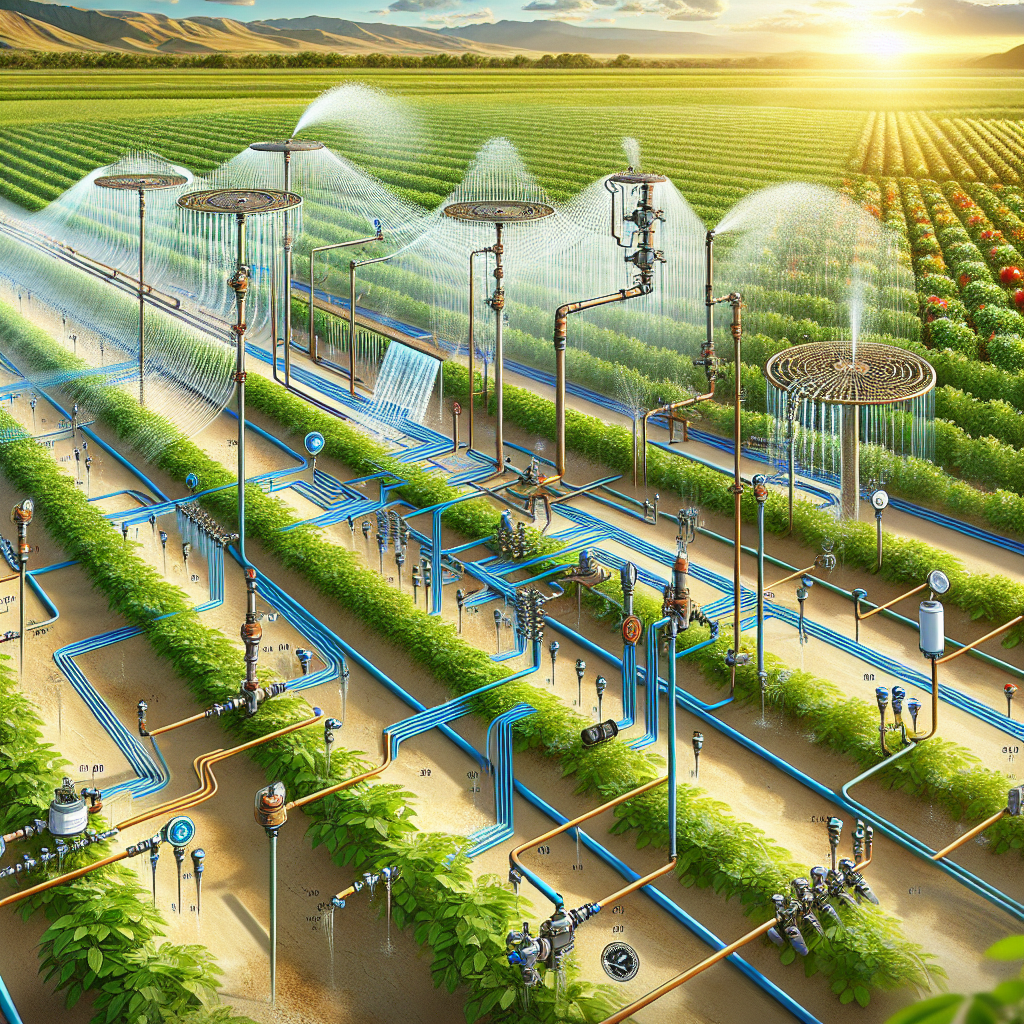Efficient Slow Drip Irrigation Methods
Drip irrigation is a method of watering crops by delivering small amounts of water directly to the roots of plants, rather than spraying water over the entire field. This method not only conserves water but also reduces the likelihood of diseases caused by excess moisture on plant leaves. Slow drip irrigation is a variation of traditional drip irrigation that involves releasing water at a slower rate, ensuring that it percolates deeply into the soil. In this article, we will explore several efficient slow drip irrigation methods and their benefits.
One popular method of slow drip irrigation is the use of soaker hoses or porous pipes. These hoses are made from materials that allow water to seep slowly through tiny pores along their length. The hoses can be laid out in rows alongside plants or buried just below the soil surface. When water flows through them, it drips out evenly along their length, providing a consistent supply of moisture to plant roots.
Soaker hoses are easy to install and can be customized to fit the layout of any garden or field. They are also cost-effective compared to traditional drip irrigation systems, making them a popular choice for small-scale farmers and home gardeners alike. By delivering water directly to plant roots, soaker hoses help prevent wastage from evaporation or runoff, resulting in significant water savings.
Another efficient slow drip irrigation method involves using drip emitters or drippers. These devices consist of small tubes with built-in emitters that release water at a controlled rate directly onto plant roots. Drippers can be attached to a main supply line and spaced out evenly along rows of plants or potted crops, ensuring that each plant receives the right amount of water.
Unlike soaker hoses, drippers are more precise in delivering water and can be adjusted to meet the specific needs of different crops. Farmers and gardeners can also use pressure-compensating drippers to ensure a consistent flow rate regardless of changes in elevation or pressure within the system. This feature makes drippers ideal for hilly terrain or areas with uneven topography.
One advantage of using drip emitters is their versatility in application. They can be used in both above-ground and sub-surface installations, making them suitable for various types of crops and soil conditions. Drippers are also easily expandable, allowing farmers to scale up their irrigation system as needed without overhauling their entire setup.
In addition to soaker hoses and drip emitters, another efficient slow drip irrigation method is using mulch as a moisture-regulating barrier. Mulch helps retain soil moisture by reducing evaporation from the surface and keeping temperatures stable around plant roots. Organic mulches like straw, wood chips, or compost provide an added benefit by decomposing over time and adding nutrients back into the soil.
Farmers can lay down mulch around plants or between rows as a protective layer against drying winds and intense sunlight. This practice not only conserves water but also improves soil structure and fertility over time. Mulching is especially beneficial for arid regions where water scarcity is a major concern, as it helps create an environment conducive to healthy root growth and crop development.
One innovative approach to slow drip irrigation involves combining different methods for maximum efficiency. For example, farmers can use soaker hoses in conjunction with mulch to create a self-regulating system that delivers water precisely where it’s needed while minimizing losses due to evaporation or runoff. By integrating various techniques like mulching, dripping, and soaking into their irrigation strategy, farmers can optimize resource use and improve crop yields sustainably.
In conclusion, efficient slow drip irrigation methods offer numerous benefits for farmers looking to conserve water while maximizing crop productivity. By utilizing tools like soaker hoses, drip emitters, and mulch strategically, growers can create a custom-tailored system that meets the specific needs of their crops while minimizing environmental impact. These methods not only save precious resources but also contribute to healthier soils and more resilient agroecosystems in the long run. As climate change poses new challenges for agriculture worldwide, adopting sustainable practices like slow drip irrigation becomes increasingly important for securing food production while safeguarding natural resources for future generations.













